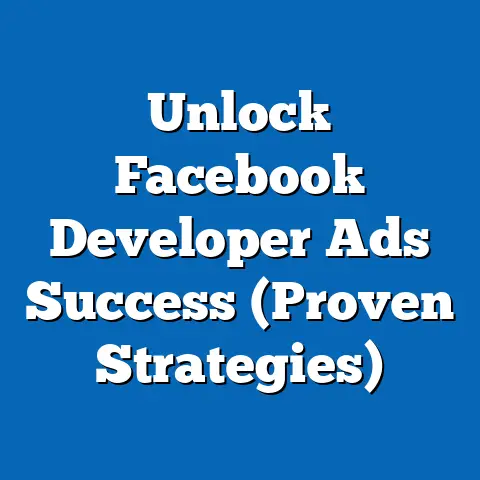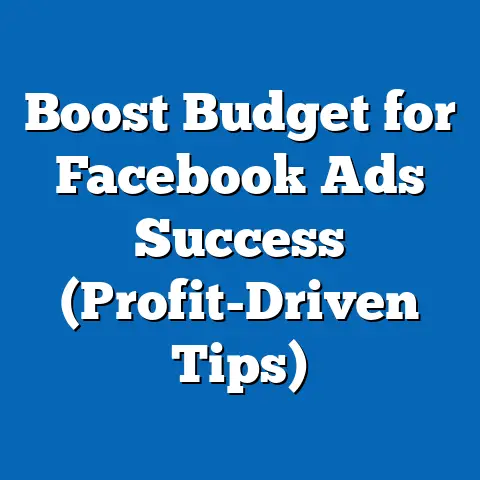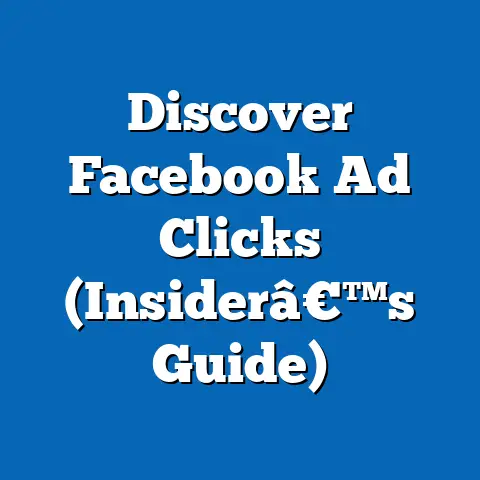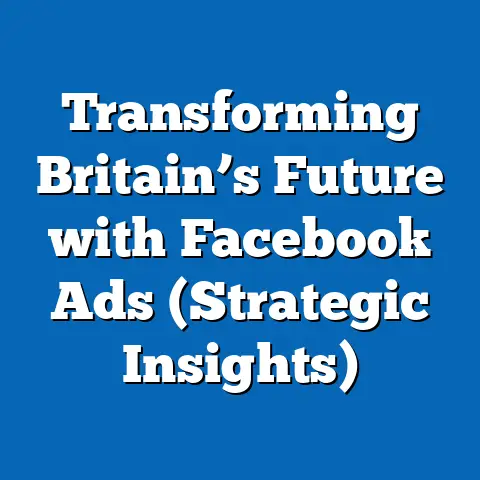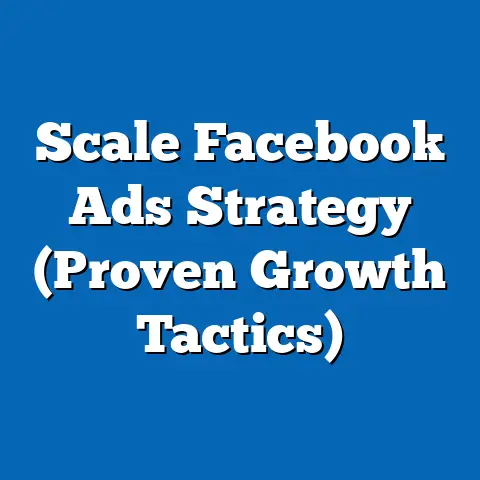Google vs. Facebook Ads: Which Drives More Sales? (Expert Insights)
Google vs. Facebook Ads: Which Drives More Sales? (Expert Insights)
The digital advertising landscape is poised for dramatic shifts in the coming decade, driven by evolving consumer behaviors, technological advancements, and changing demographic trends. As businesses increasingly rely on platforms like Google and Facebook (now Meta) to drive sales, understanding the future of these advertising giants and their respective user bases is critical for marketers aiming to maximize return on investment (ROI). This article delves into a comprehensive analysis of Google Ads and Facebook Ads, focusing on their future trajectories, the demographic makeup of their audiences, core user beliefs and behaviors, engagement patterns, and distinguishing characteristics compared to other advertising platforms, while ultimately addressing the central question: which platform drives more sales?
The Future of Digital Advertising: Google and Facebook in 2030
The future of digital advertising hinges on adaptability to user expectations and regulatory landscapes. Google and Facebook, as dominant players, are expected to maintain their stronghold, with global digital ad spending projected to reach $740 billion by 2025, according to eMarketer (2023). However, their growth will be shaped by distinct user bases and technological pivots.
Google Ads, leveraging its search engine dominance, is forecasted to prioritize AI-driven personalization and voice search integration, with 55% of U.S. households expected to own smart speakers by 2025 (Statista, 2023). This positions Google to capture intent-driven sales, particularly among older, tech-savvy demographics. Conversely, Facebook Ads, under Meta’s broader ecosystem, will likely focus on immersive experiences through the metaverse and short-form video content via Instagram Reels, targeting younger, visually oriented users.
Regulatory challenges, such as the European Union’s General Data Protection Regulation (GDPR) and California’s Consumer Privacy Act (CCPA), will impact both platforms, with 68% of global consumers expressing concern over data privacy (Pew Research, 2022). Google’s shift away from third-party cookies by 2024 and Meta’s response to Apple’s App Tracking Transparency (ATT) framework signal a future where first-party data and contextual advertising will dominate. These trends will redefine how each platform drives sales, necessitating a deeper look into their demographic compositions and user behaviors.
Demographic Composition of Google and Facebook Users
Google Users: Broad and Intent-Driven
Google’s user base spans a wide demographic spectrum due to its near-universal utility as a search engine, with over 4.3 billion users globally as of 2023 (Statista). Age-wise, Google users are distributed across generations, with 62% of 18-29-year-olds, 65% of 30-49-year-olds, and 58% of those 50+ using Google daily for search queries (Pew Research, 2023). This broad reach reflects Google’s role as a primary information gateway, cutting across racial, educational, and income lines, though usage intensity is higher among college-educated individuals (70%) compared to those with high school education or less (52%).
Geographically, Google dominates in North America and Europe, with 89% market share in search advertising in the U.S. (eMarketer, 2023). Its user base leans slightly male (53%) compared to female (47%), with urban users (68%) outpacing rural ones (32%) in search frequency. These demographics suggest Google Ads are particularly effective for targeting diverse, intent-driven consumers actively seeking products or services.
Facebook Users: Younger and Socially Engaged
Facebook, with 2.9 billion monthly active users as of 2023 (Meta), skews younger and more socially oriented. Approximately 70% of U.S. adults aged 18-29 use Facebook, compared to 50% of those 50-64 and just 34% of those 65+ (Pew Research, 2023). The platform’s user base is more balanced by gender (51% female, 49% male) and shows strong representation across racial groups, with 74% of Black Americans and 72% of Hispanic Americans using the platform compared to 67% of White Americans.
Education and income levels also shape Facebook’s audience, with 68% of users having at least some college education and a notable presence among middle-income households ($30,000-$74,999 annually). Geographically, Facebook’s strength lies in mobile-first markets like Asia-Pacific and Latin America, though its U.S. user base remains robust at 229 million (Statista, 2023). This demographic profile positions Facebook Ads for targeting socially engaged, younger consumers through community-driven and visual content.
Comparison to Other Platforms
Compared to platforms like TikTok (skewing heavily toward Gen Z with 67% of users under 30) or LinkedIn (targeting professionals, with 60% of users aged 25-34), Google and Facebook offer broader reach but differ in intent. Google captures users at the decision-making stage of the buyer journey, while Facebook excels in the awareness and consideration phases through social discovery. These demographic distinctions are critical for understanding sales conversion potential.
Core Beliefs and Values of User Bases
Google Users: Information-Seeking and Pragmatic
Google’s user base values efficiency, accuracy, and relevance, with 81% of users citing trust in search results as a key factor in their platform loyalty (Google Consumer Insights, 2022). This pragmatic mindset aligns with a belief in technology as a problem-solving tool, particularly among older users (50+) who rely on Google for health and financial queries (65% of searches in this age group). Younger users (18-29) often use Google for educational and career-related searches, reflecting a value system rooted in self-improvement.
Privacy concerns, however, are rising, with 59% of Google users expressing unease over data collection practices (Pew Research, 2022). This tension between utility and privacy will shape how Google Ads evolve, potentially prioritizing transparency and opt-in data sharing to maintain trust.
Facebook Users: Community-Oriented and Expressive
Facebook users prioritize connection and self-expression, with 74% using the platform to stay in touch with friends and family (Meta Insights, 2023). This community focus is especially pronounced among younger users and minority groups, who often engage with cultural and social causes via groups and events (68% of Black users report joining cause-related groups). Visual storytelling, through photos and videos, is a core value, with 82% of users interacting with multimedia content daily.
Like Google users, privacy is a concern, with 64% of Facebook users worried about data misuse post-Cambridge Analytica (Pew Research, 2022). However, the platform’s social utility often outweighs these concerns, particularly for users under 30, who value engagement over anonymity.
Comparative Analysis
Google users’ pragmatic, information-driven ethos contrasts with Facebook’s emphasis on social bonds and expression, influencing ad receptivity. Google Ads resonate with users seeking solutions (e.g., product comparisons), while Facebook Ads appeal to emotional and aspirational triggers (e.g., lifestyle branding). These core beliefs directly impact sales strategies, as intent-driven Google users may convert faster, while Facebook users require nurturing through storytelling.
Engagement Patterns and Behavioral Trends
Google: High-Intent, Transactional Engagement
Google users exhibit high-intent behavior, with 53% of searches leading to a purchase decision within 24 hours (Google Consumer Insights, 2022). Engagement peaks in categories like e-commerce (28% of searches), travel (15%), and local services (12%), with mobile searches driving 60% of total queries (Statista, 2023). Click-through rates (CTR) for Google Ads average 3.17% across industries, with conversion rates around 4.4%, reflecting strong transactional outcomes (WordStream, 2023).
Demographically, engagement varies by age, with 18-34-year-olds showing higher mobile search frequency (72%) compared to those 50+ (48%). Urban users also engage more frequently with localized ads, with 76% clicking on “near me” search results. These patterns underscore Google Ads’ strength in driving direct sales for businesses targeting immediate consumer needs.
Facebook: Social, Long-Term Engagement
Facebook users engage through likes, comments, and shares, with 69% interacting with branded content weekly (Meta Insights, 2023). Engagement is highest among 18-29-year-olds (78% daily interaction) and women (73% vs. 65% for men), often driven by video ads and influencer collaborations. However, CTR for Facebook Ads is lower at 0.9%, with conversion rates averaging 9.21% due to retargeting capabilities (WordStream, 2023).
Unlike Google’s transactional focus, Facebook’s engagement builds brand loyalty over time, with 62% of users following brands for updates or promotions. This social dynamic suits businesses aiming for repeat purchases or community building, particularly in industries like fashion and entertainment.
Comparison and Sales Implications
Google’s high-intent engagement drives quicker sales, evidenced by a 20% higher conversion rate for search ads compared to social ads in retail (eMarketer, 2023). Facebook, however, excels in customer lifetime value (CLV), with 35% of users making repeat purchases after initial ad exposure (Meta Insights, 2023). Businesses must weigh these patterns—Google for immediate ROI, Facebook for sustained growth—when allocating ad budgets.
Policy Positions and Platform Strategies on Major Issues
Google: Privacy and AI Innovation
Google’s policy focus centers on balancing privacy with innovation. The phasing out of third-party cookies by 2024 reflects a response to user concerns, with 72% of advertisers anticipating a shift to contextual targeting (eMarketer, 2023). Additionally, Google invests heavily in AI, with tools like Performance Max campaigns optimizing ad delivery, contributing to a 15% increase in ad revenue year-over-year (Google Q3 2023 Report).
These strategies position Google Ads as a leader in precision targeting, though privacy restrictions may reduce granular data access, impacting small businesses reliant on detailed demographics. Google’s commitment to sustainability, with carbon-neutral operations by 2030, also appeals to eco-conscious advertisers and users.
Facebook: Metaverse and Content Moderation
Meta’s policy priorities include metaverse development, with $10 billion invested in 2022 alone (Meta Annual Report), aiming to redefine immersive advertising for younger demographics. Content moderation remains a challenge, with 58% of users citing misinformation as a concern (Pew Research, 2023), prompting increased AI moderation tools. Privacy adaptations, post-ATT, have led to a 10% revenue dip in 2022, pushing Meta toward first-party data solutions (Meta Q2 2023 Report).
For advertisers, Meta’s focus on video and virtual experiences offers novel sales channels, though trust issues may deter some users. The platform’s social responsibility initiatives, like mental health campaigns, resonate with younger audiences, potentially enhancing ad receptivity.
Comparative Impact on Sales
Google’s privacy-first, AI-driven approach ensures reliable sales conversions despite data limitations, while Meta’s metaverse gamble introduces uncertainty but high potential for innovative engagement. Businesses in tech or B2B sectors may favor Google’s precision, while lifestyle brands could leverage Meta’s experiential ads for long-term sales growth.
Distinguishing Features from Other Advertising Platforms
Google Ads: Search Dominance and Intent
Google Ads’ defining feature is its search-based ecosystem, capturing users at peak purchase intent, unlike display-focused platforms like programmatic networks (e.g., The Trade Desk). Its integration with YouTube (2.5 billion users) adds video reach, though secondary to search, with 25% of ad revenue from video (Google Q3 2023 Report). Cost-per-click (CPC) averages $2.69, higher than competitors, reflecting premium placement value (WordStream, 2023).
Facebook Ads: Social Precision and Visual Appeal
Facebook Ads stand out for hyper-targeted social advertising, leveraging user interests and behaviors, unlike broader platforms like Twitter (now X), which prioritize trending content. Its visual formats (Stories, Reels) drive 40% higher engagement than static ads (Meta Insights, 2023), with CPC at $0.97, making it cost-effective for brand awareness. Integration with Instagram and WhatsApp further amplifies cross-platform reach.
Cross-Platform Comparison
Compared to Amazon Ads (focused on e-commerce, 50% conversion rate in retail) or TikTok Ads (Gen Z dominance, 80% user engagement under 30), Google offers unmatched intent-driven reach, while Facebook provides social depth. Sales outcomes depend on product type—Google for direct purchases, Facebook for aspirational or recurring buys.
Intersections with Age, Education, Race, and Religion
Age and Education
Google’s broad age appeal contrasts with Facebook’s youth skew, influencing ad strategies. Higher-educated users on both platforms (70% college-educated on Google, 68% on Facebook) respond to data-driven or professional ads, while less-educated users prefer straightforward messaging. Sales campaigns must adapt—Google for cross-generational products, Facebook for youth trends.
Race and Religion
Facebook’s strong minority engagement (74% Black, 72% Hispanic) offers sales potential for culturally tailored ads, compared to Google’s more uniform racial distribution. Religious targeting, more feasible on Facebook via group affiliations, can drive niche sales (e.g., faith-based products), though both platforms face ethical scrutiny over such segmentation.
Broader Implications
These intersections highlight Google’s strength in universal reach versus Facebook’s niche community targeting. Sales strategies must account for cultural resonance on Facebook and broad accessibility on Google.
Consensus and Division Within Advertising Strategies
Consensus
Both platforms agree on data-driven personalization as key to sales, with 85% of advertisers on each citing ROI as the top metric (eMarketer, 2023). Mobile-first strategies also unite them, with 60% of ad spend allocated to mobile formats.
Division
Divisions arise in approach—Google prioritizes search intent, while Facebook emphasizes social engagement. Cost structures (Google’s higher CPC vs. Facebook’s lower) and privacy adaptations (Google’s cookie phase-out vs. Meta’s ATT challenges) further split strategies, impacting sales outcomes by industry.
Historical and Social Context
Historically, Google Ads (launched 2000) pioneered search advertising, shaping a $200 billion industry by 2023 (eMarketer). Facebook Ads (2007) redefined social marketing, growing from niche to mainstream with visual trends. Socially, Google aligns with information democratization, while Facebook mirrors community-building desires, influencing sales through trust and relatability.
Conclusion: Which Drives More Sales?
Data suggests Google Ads drive more immediate sales, with higher CTR (3.17%) and faster conversion timelines (53% within 24 hours), ideal for direct-response campaigns. Facebook Ads excel in long-term sales through engagement (9.21% conversion rate post-retargeting), suiting brand-building efforts. Ultimately, the choice depends on business goals—Google for quick ROI, Facebook for sustained growth. Hybrid strategies, blending Google’s intent with Facebook’s nurture, may yield optimal results, with 68% of top advertisers using both (eMarketer, 2023). As digital advertising evolves, aligning with demographic trends and user values will remain paramount for maximizing sales.

